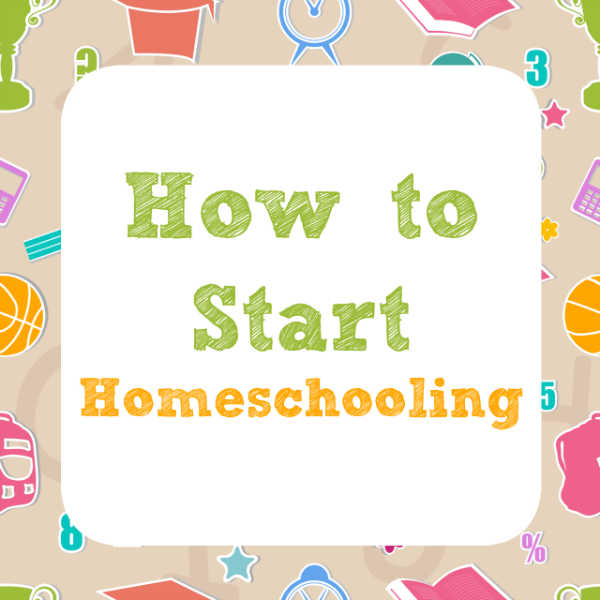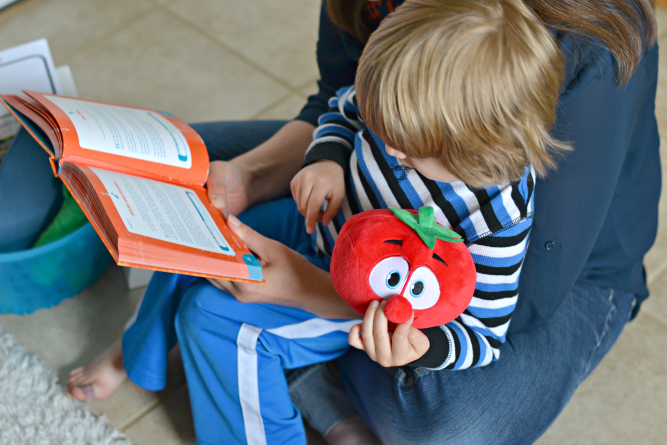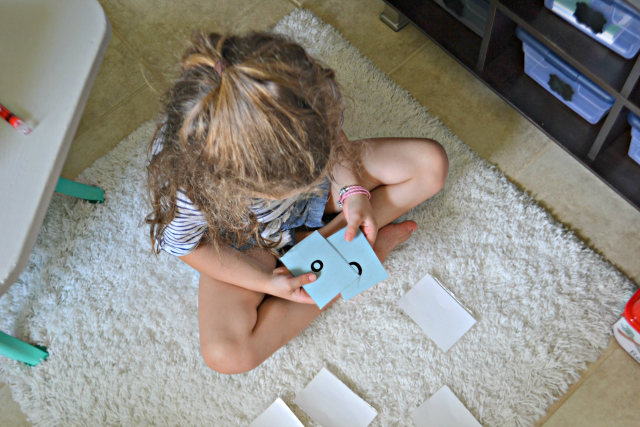Have you entertained the idea of homeschooling your children? For many parents, it seems more like a vague theory that a viable possibility, and they find themselves feeling like this…
“I love the idea of homeschooling my children, but I’m not sure where to begin. I don’t think is is something I could ever do.”
–An aspiring homeschool mom
It is a huge undertaking, but it is also completely doable. Embarking on a homeschool adventure with your kids is all about taking baby steps and a few giant leaps of faith. The first step is to simply get started. Maybe even reading this post is that first baby step for you. Please know that I’m not trying to convince you that it’s the perfect schooling option for everyone or the only way to go. I know it’s not something that is on everyone’s heart to do. If it is something that you have considered though, here are some steps to help get you started on this worthwhile and valuable investment in your children…
1. Do some research.
- Become familiar with state laws in regards to homeschooling.
- Talk to other parents who are schooling their children.
- Read blogs or books on the topic.
Begin the process by becoming more educated on this form of schooling.
2. Find support. Homeschooling shouldn’t be an isolating journey. There are support groups (even on Facebook), co-ops, and umbrella programs designed to give you the support you need. You can read about some of the benefits of joining a co-op in this post. Trust me when I say that there will be hard days, and you are going to want a community to turn to when they come. Lean on the support of your spouse and family too!
3. Let’s talk about the BIG “S” word. If you are considering homeschool for the first time, you are either thinking about this word or someone has likely brought it up. SOCIALIZATION! I can hear the questions now.
“What about the social benefits of going to a brick and mortar school?”
“How will a student become socialized if they are homeschooled?”
Let me ask you a question though. “When did being placed into a classroom year after year with relatively the same group of 20+ students who are the all same age become the end-all, be-all form of socialization?” Children who are homeschooled are just as socialized, if not more, than those in public or private school. Homeschool students are exposed to co-ops, the potential for more time on extracurricular activities, classes in the community for homeschoolers, substantial opportunities for real-world experiences, church groups, neighborhood friends, travel, and a wide range of other social settings–each with its own diverse group of individuals.
Dances, field trips, yearbook, theater, student government, and clubs–a homeschool co-op alone can have all of those things! Now that we’ve covered the issue of socialization, you’ll be prepared to answer the most common question asked of homeschool families.
4. Discover your style. Learn about different homeschool styles and start thinking about which one(s) would be the best fit for your family. Think about your child’s learning style too. Are they a visual, auditory, or kinesthetic learner? What are their interests? These should be top considerations when choosing a method for homeschooling.
5. What’s your vision? Grab a sheet of paper and begin writing down answers to these questions:
- What would you want a typical homeschool day to look like?
- What are your family’s priorities? Faith? Travel? Read-world experiences?
- What are your goals for the year? How will you accomplish these goals?
- What components do you want included in your child’s education?
Answering these questions will help you start to envision what homeschooling might look like for your family. Take a look at your answers and use them to write a mission statement for your homeschool. Having a mission statement will give you focus, drive, and motivation.
6. Choose your curriculum. This can be one of the most overwhelming aspects of homeschooling. Knowing the style and vision for your homeschool will help with this area though. You can piece together your own resources or buy a boxed set or curriculum. The choice is yours!
You’ll also want to consider your budget when sourcing and purchasing curriculum. Bookstores and school supply stores are great places to see materials firsthand, but you may want to shop around online to find the best deals. Take advantage of used curriculum sales too! You can learn more about these through local homeschool groups. The North Peters location of Cedar Springs Christian Stores has a wide selection of new and used curriculum for great prices. There are countless printables and resources available online as well–many of these are even FREE.
7. Decide on a place in your home to have school. Kitchen table? Living room? An entire room? The great outdoors? Sure, you are going to be out and about taking advantage all the community has to offer, but you’ll also want a designated place in your home to hold school. Here is our homeschool room and a look at how it is organized. Hopefully that will give you some inspiration when carving out your own school space.
8. Don’t try to recreate the classroom. Homeschool isn’t going to look like traditional education. Don’t put pressure on yourself to fit that mold. In a homeschool environment, cooking, trips to the grocery store, and everyday experiences can become teachable moments. Don’t limit yourself to the confines of traditional school hours either. Learning can happen anywhere and at anytime!
9. Have realistic expectations. There are going to be wonderful, productive days filled with books being read together on the couch, field trips, outdoor adventures, science experiments, and art projects. There will also be days when someone is sick or your toddler has just smeared bright red lipstick on the floor and the carpet cleaners are on their way. Life happens! Give yourself grace on those days. Even in a traditional school environment, kids get sick and interruptions occur. The wonderful thing about homeschooling is that you can make it up later without skipping a beat.
10. Come up with a plan and give it a try! A plan of action, schedule, and organization are essential to an effective homeschool environment. Take some time to work these things out. Remember that nothing is set in stone though. Plans can always be tweaked and changed. If something isn’t working out, come up with a different plan. Guess what! That’s what school teachers do everyday, and you’re the teacher in this new adventure!
For more resources on how to begin your homeschool journey, be sure to check out my homeschool and schoolroom boards on Pinterest! Happy homeschooling!
























Great tips. Thanks for all of the useful links!
Thank you for helping to inspire the post. I really appreciated your suggestion!
Great post! Thank you for all the great information. I am homeschooling my two boys for the first year and found it very useful.
I’m so glad you found it helpful. Good luck this year! I hope it’s a great one!
Do you have suggestions for middle school homeschool programs?
Such a lovely post to read. I really like homeschooling. Homeschooling can be such a great thing for families. You can pick and choose the types of materials to use, embrace a lifestyle of learning, and find true friendships for both you and your kids. Thanks for sharing the post.